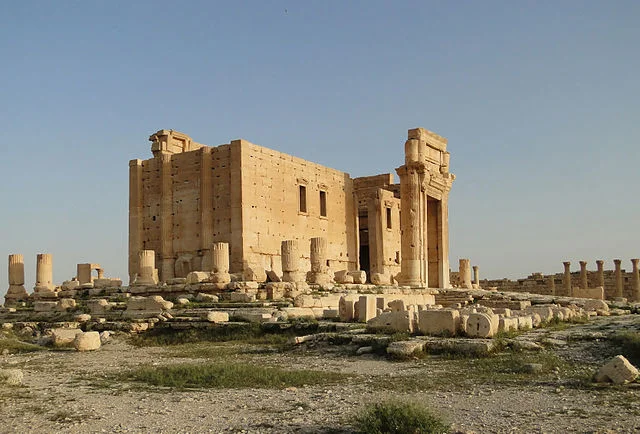The Temple of Bel in Palmyra, Syria, stands as one of the most significant ancient monuments in the Near East. Constructed during the reign of the Roman emperor Tiberius, between 17 and 19 AD, the temple was dedicated to Bel, the chief god of Palmyra. This grand structure epitomizes the religious and cultural importance of Palmyra, a wealthy city that acted as a crossroads of trade and culture between the Roman, Persian, and Arabian worlds.
Get your dose of History via Email
Architecture of the Temple
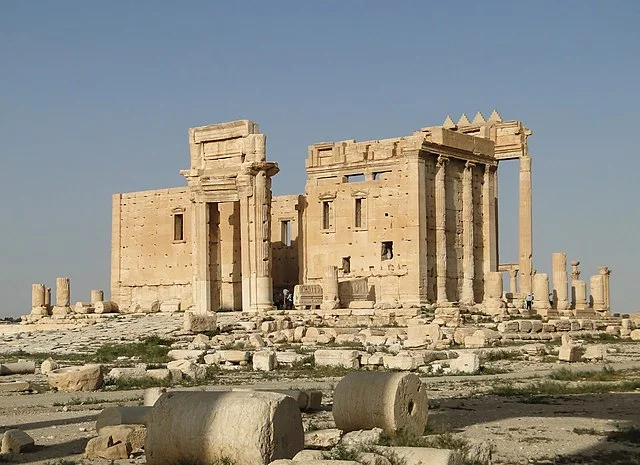
The Temple of Bel was an imposing structure, designed in the classical style but incorporating distinct elements of Palmyrene art and architecture. It featured a large open courtyard surrounded by porticos with towering columns. A monumental entrance gate, flanked by two massive towers, led into the temple complex. The central structure was a cella, where the statue of Bel was housed. Its walls, made of local limestone, were adorned with intricate carvings that depicted scenes from Palmyrene mythology and religious rituals.
The temple’s design reflected the blending of Greco-Roman and local architectural traditions. Its layout followed the traditional Roman temple design with a central naos, but its column capitals and decorative reliefs showed the influence of Mesopotamian and Arabian styles. This fusion of cultures highlighted Palmyra’s unique position as a cosmopolitan city at the crossroads of major empires.
Religious Significance
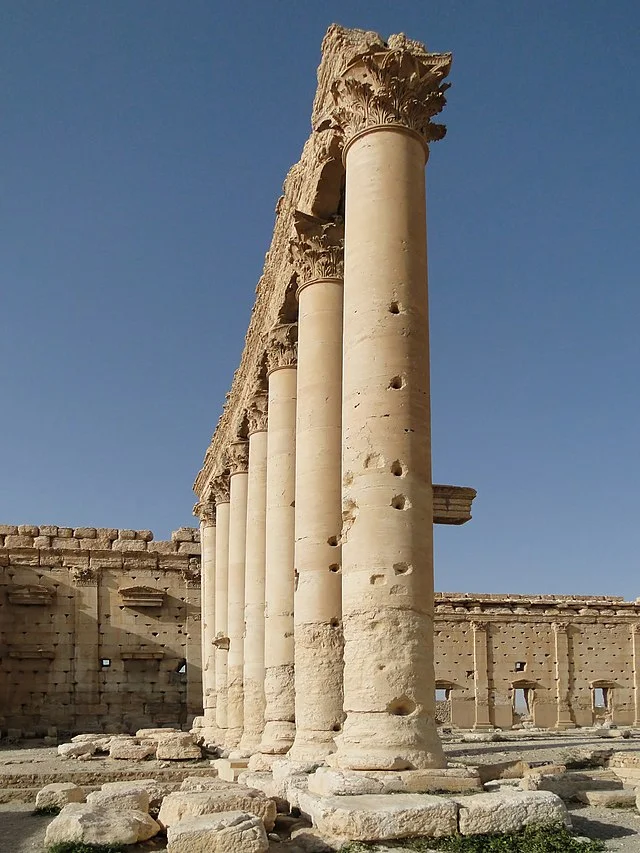
The Temple of Bel was not only a place of worship but also a symbol of Palmyra’s religious and political power. Bel was considered the god of wisdom, war, and fertility. As the patron deity of the city, Bel held a central role in the daily lives of the Palmyrenes. The temple served as a site for important ceremonies, including sacrifices and festivals dedicated to Bel.
Rulers of Palmyra, such as the queen Zenobia, used the temple to display their power and divine legitimacy. These rulers often claimed direct descent from the gods, and the temple reinforced their connection to the divine. The temple also played a role in Palmyra’s diplomatic relationships with other powers, such as Rome and Persia.
Decline and Destruction
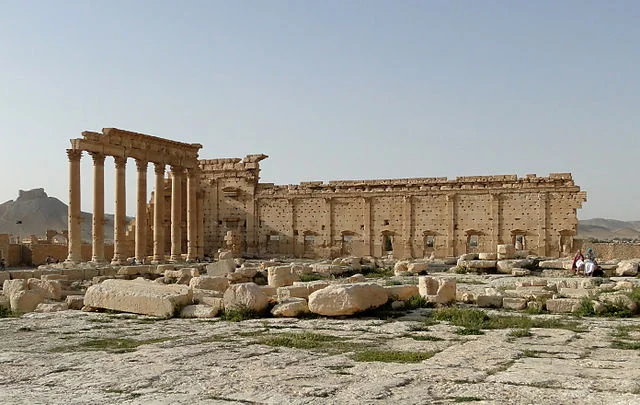
The Temple of Bel suffered significant damage over the centuries. After the rise of Islam in the 7th century AD, the temple fell into disuse, and much of its structure was repurposed for other buildings. Despite this, some remnants of the temple survived, continuing to stand as a reminder of the city’s former grandeur.
In 2015, the temple was severely damaged by ISIS militants during the Syrian Civil War. They deliberately destroyed the cella and many of its sculptures, a tragic loss to the cultural heritage of Syria and the world. The destruction of the temple was part of a broader campaign of cultural vandalism by ISIS, which targeted many other archaeological sites in the region.
Archaeological Discoveries
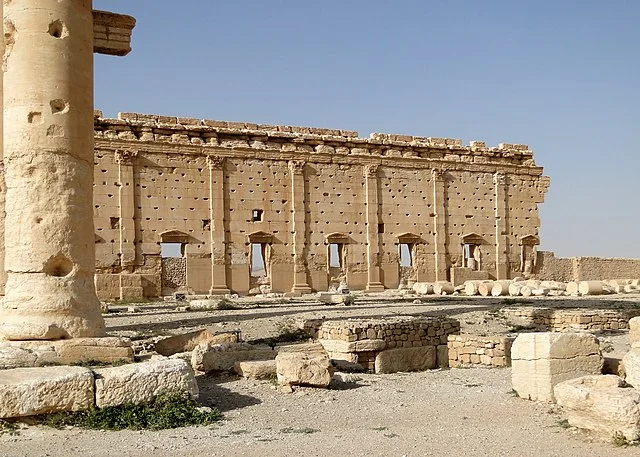
Before its destruction, the Temple of Bel was a site of important archaeological excavation. Excavations in the 20th century uncovered many artifacts, including inscriptions, statues, and coins, shedding light on the religious practices of the Palmyrenes. The discovery of these objects helped archaeologists and historians understand the temple’s significance, as well as the role of Palmyra in the wider ancient world.
Today, the ruins of the Temple of Bel continue to be a focus of archaeological research. Efforts to digitally reconstruct the temple using photographs and 3D modeling aim to preserve its memory and provide insights into its original structure.
Conclusion
The Temple of Bel in Palmyra was a symbol of the city’s prosperity, religious devotion, and cultural exchange. Despite the devastation it suffered, it remains a key part of the history of the ancient Near East. The temple’s destruction serves as a reminder of the fragility of cultural heritage in times of conflict. However, its legacy continues to inspire research and conservation efforts aimed at preserving the history of Palmyra and the ancient world.
Source:

